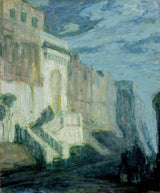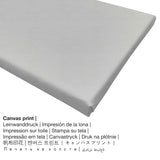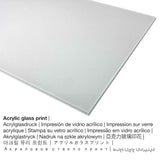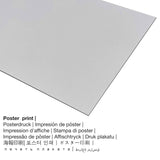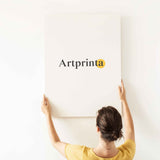Henry Ossawa Tanner, 1914 - Moonlight, Mgbidi nke Tangiers - ọmarịcha nka
Ụtụ gụnyere. Mbupu gbakọrọ na ndenye ọpụpụ.
Original information about the artwork from the museum's website (© Copyright - Los Angeles County Museum of Art - Ebe ngosi nka nke Los Angeles County)
Following his 1910 trip to Morocco, Tanner painted many scenes of Tangiers and exhibited them in Chicago at Thurber Art Galleries in 1911 and in New York at M. Knoedler & Co. in 1913. Although Moonlight: Walls of Tangiers has traditionally been dated 1914, based on William Preston Harrison’s authority, the painting may have been executed earlier, for several of the works exhibited in 1913 have similar titles, in particular one painting entitled Moonrise: Walls of Tangiers. Although the North African locale provided the same exotic scenery incorporated in Tanner’s religious images, the Moroccan scenes are not religious. The elimination of a narrative may have assisted Tanner in his exploration of the formal aspects of painting, for it is just during these prewar years that his art underwent its last stylistic change. Tanner used his views of the streets, walls, and arcades of the city to explore the phenomena of color and light, not in an analytical manner as did the impressionists, but rather in harmony with both his own romanticism and turn-of-the-century tonalist trends in Europe and the United States. The Moroccan paintings are all vague, shadowy scenes painted in one predominant hue with thick, scumbled passages over rich glazing on a white ground. The blue and green palette of Moonlight: Walls of Tangiers has shades of yellow, peach, and purple. Tanner had begun to experiment with pigments and glazes around 1907 and by World War I was almost exclusively using the complex technique of layered glazes. Perhaps it was his renewed acquaintance with the Orient that enabled Tanner to develop the more resonant and colorful painting style characteristic of his art from about 1910 until his death in 1937.
Nkọwa gbasara nka
| Akụkụ nka: | "Moonlight, Walls of Tangiers" |
| Nhazi nke ihe nka: | sere |
| Otu izugbe: | nkà nke oge a |
| oge: | 20th narị afọ |
| Emepụtara n'afọ: | 1914 |
| Afọ nka: | karịa afọ 100 |
| Ọkara nke ihe osise izizi: | mmanụ na kwaaji |
| Nha ihe osise izizi: | 25 7/8 x 21 1/4 na (65,72 x 54,1 cm) |
| Ụlọ ihe ngosi nka: | Ebe ngosi nka nke Los Angeles County |
| Ebe ngosi nka: | Los Angeles, California, Njikota Obodo Amerika |
| Ebe nrụọrụ weebụ ihe ngosi nka: | www.lacma.org |
| Akwụkwọ ikike nka: | ngalaba ọha |
| Site n'aka: | Ụlọ ihe ngosi nka nke Los Angeles County (www.lacma.org) |
Ozi ndabere na onye na-ese ihe
| Ihe nkiri: | Henry Ossawa Tanner |
| Aha utu aha: | Tanner Henry Owassa, Tanner Henri, Tanner Henri Ossawa, Tanner Henry Ossawa, Henry Ossawa Tanner, Henry Owassa Tanner, Tanner |
| okike onye nka: | nwoke |
| Obodo onye nka: | American |
| Ọrụ nke onye na-ese ihe: | onye nkuzi mahadum, onye na-ese ihe |
| Obodo onye nka: | United States |
| Nhazi nke onye nka: | omenkà nke oge a |
| Nwụrụ anwụ: | 78 afọ |
| Afọ ọmụmụ: | 1859 |
| Amụrụ na (ebe): | Pittsburgh, Allegheny County, Pennsylvania, Njikota Obodo Amerika |
| Nwuru: | 1937 |
| Ebe ọnwụ: | Paris, Ile-de-France, France |
Nkọwapụta ngwaahịa
| Nkewa edemede: | ọmarịcha nka |
| Mmeputakwa: | mmeputakwa n'ụdị dijitalụ |
| Usoro mmepụta: | Mbipụta UV ozugbo (mbipụta dijitalụ) |
| Production: | Germany |
| Stockdị ngwaahịa: | mmepụta ihe na-achọ |
| A na-atụ aro iji ngwaahịa eme ihe: | ime ụlọ, gallery mgbidi |
| Ndepụta: | nhazi ihe osise |
| Ụdị anya: | 1: 1.2 - ogologo: obosara |
| Nkọwa nke oke ihe onyonyo: | ogologo bụ 20% mkpụmkpụ karịa obosara |
| Akụrụngwa ị nwere ike ịhọrọ site na: | akwụkwọ mmado (akwụkwọ kwaaji), mbipụta ọla (aluminium dibond), mbipụta iko acrylic (nke nwere ezigbo mkpuchi iko), mbipụta akwụkwọ. |
| Nhọrọ nke Canvas Mbipụta (akwa akwa na etiti ihe ndọtị): | 50x60cm - 20x24", 100x120cm - 39x47" |
| Mbipụta iko acrylic (nwere ezigbo mkpuchi iko) nhọrọ nha: | 50x60cm - 20x24", 100x120cm - 39x47" |
| Nhọrọ nha nke akwụkwọ mmado (akwụkwọ kwaaji): | 50x60cm - 20x24", 100x120cm - 39x47" |
| Nhọrọ Dibond (ihe alumnium) nhọrọ: | 50x60cm - 20x24", 100x120cm - 39x47" |
| Nhazi mbipụta nka: | biko chere na ngwaahịa a enweghị etiti |
Họrọ ihe kacha amasị gị
Nchịkọta nhọrọ ngwaahịa na-enye gị ohere ịhọrọ nha na ihe ị họọrọ. Họrọ nha na ihe kacha amasị gị n'ime nhọrọ ndị a:
- Aluminom dibond mbipụta (ọla): These are metal prints on aluminium dibond with an impressive effect of depth, creating a modern look thanks to a non-reflective surface.
- Mpempe akwụkwọ (ihe kwaaji): The Artprinta poster is a UV printed canvas paper with a granular finish on the surface. A poster is designed for putting the fine art print with a personal frame. Please bear in mind, that depending on the absolute size of the poster we add a white margin 2-6cm round about the work of art to facilitate the framing with your custom frame.
- Mpempe iko acrylic na-egbuke egbuke: An print on acrylic glass, which is often referenced as a fine art print on plexiglass, will change the original work of art into amazing décor. The artwork will be made with state-of-the-art UV direct print technology.
- Mbipụta kanvas: A canvas direct print is a printed canvas stretched on a wood stretcher. A canvas has a sculptural impression of three dimensionality. The canvas produces a cosy and comfortable effect. A canvas print has the great advantage of being relatively low in weight. That means, it is easy to hang up your Canvas print without any wall-mounts. Canvas prints are suitable for any type of wall.
Nchịkọta ngwaahịa nka
The nkà nke oge a masterpiece was made by the American artist Henry Ossawa Tanner. Nke mbụ tụrụ nha: 25 7/8 x 21 1/4 na (65,72 x 54,1 cm) ma jiri usoro ihe arụpụtara ya mmanụ na kwaaji. The work of art is included in the Los Angeles County Museum of Art's collection. With courtesy of: Ụlọ ihe ngosi nka nke Los Angeles County (www.lacma.org) (licensed: public domain).: . In addition to this, the alignment is Eserese ya na oke akụkụ nke 1: 1.2, nke pụtara na ogologo bụ 20% mkpụmkpụ karịa obosara.
Ederede iwu: We try whatever we can in order to depict the products in as much detail as possible and to illustrate them visually. Nevertheless, the pigments of the print materials and the imprint can diverge somehwat from the representation on the monitor. Depending on the screen settings and the quality of the surface, not all color pigments will be printed 100% realistically. In view of the fact that all our are processed and printed manually, there might also be minor deviations in the motif's size and exact position.
© Copyright - Artprinta.com (Artprinta)

